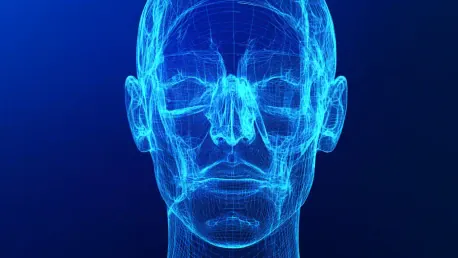The dawn of holography technology marks a revolutionary period in healthcare, enhancing diagnostic capabilities, surgical planning, and medical education. With predictions of the global medical holography market reaching $7.11 billion by 2029, the healthcare sector stands on the brink of profound transformation. Three-dimensional (3D) visual representations created through advanced holography techniques are poised to redefine the way medical professionals approach patient care, making it possible to visualize and understand complex anatomical structures and medical data like never before.
Technological Advancements Leading the Charge
The integration of artificial intelligence (AI) and augmented reality (AR) within holography is setting new standards for medical imaging, revolutionizing the practice of medicine. These technological advancements enable real-time analysis, augment image quality, and facilitate interactive user experiences, pushing the boundaries of what is possible in medical visualization. The combination of AI and AR with holography allows for more accurate and dynamic imaging, providing unprecedented levels of detail and clarity that are crucial for medical diagnostics and surgical procedures.
Moreover, holographic displays are giving healthcare professionals unparalleled insight into complex spatial relationships, which are often difficult to interpret using traditional imaging methods. Surgeons now have the ability to visualize intricate anatomical structures in 3D, increasing the precision of surgical interventions and reducing the likelihood of errors. These displays are particularly beneficial during complex surgeries, where a clear and accurate understanding of the patient’s anatomy is essential for successful outcomes. As the technology continues to advance, it is expected that holographic imaging will become an integral part of surgical planning and execution, further enhancing the quality of patient care.
Precision Medicine and Personalized Care
Medical holography is becoming increasingly pivotal to the realm of precision medicine, which tailors treatments based on individual patient data to achieve better health outcomes. The ability of holography to deliver detailed, patient-specific 3D imaging ensures improved accuracy in diagnosis and treatment plans, enabling healthcare providers to customize interventions to meet the unique needs of each patient. This personalized approach to healthcare is expected to lead to more effective and efficient treatments, reducing the burden on healthcare systems and improving patient satisfaction.
The enhanced visualization capabilities of holography pave the way for more effective precision treatments, aligning them more closely with patients’ unique biological characteristics. For example, oncologists can use holographic imaging to better understand the specific characteristics of a patient’s tumor, allowing them to select the most appropriate treatment options and monitor the effectiveness of therapy in real time. Similarly, cardiologists can employ holography to visualize the intricacies of a patient’s heart structure, aiding in the diagnosis and treatment of cardiovascular conditions. The potential applications of holography in precision medicine are vast, and as the technology continues to evolve, it is likely to become an indispensable tool in the delivery of personalized healthcare.
Regional Influences and Market Leaders
North America, spearheaded by the United States, stands as the dominant market leader in medical holography, thanks to its advanced healthcare infrastructure and substantial investments in medical technology. The region’s well-established healthcare system, coupled with a high level of acceptance for innovative imaging solutions, has created a favorable environment for the adoption of holographic technology. Furthermore, the U.S. government and private sector have made significant investments in research and development, driving advancements in holography and contributing to the growth of the market. As a result, North America is expected to maintain its leadership position in the global medical holography market for the foreseeable future.
Conversely, Asia Pacific promises to be the fastest-growing region in the medical holography market. Significant strides in healthcare modernization, particularly in China, drive regional advancements in holography applications, making it an attractive market for investors and technology providers. The Chinese government’s focus on integrating digital health technologies and enhancing healthcare services has facilitated the adoption of innovations like holography, improving diagnostic and educational practices in the region. Additionally, countries like India and Japan are also investing heavily in healthcare infrastructure and technology, further contributing to the growth of the medical holography market in the Asia Pacific region. As these countries continue to modernize their healthcare systems, the demand for advanced imaging solutions is expected to rise, driving the adoption of holographic technology.
Educational Impact and Institutional Adoption
Academic institutions are at the forefront of adopting medical holography for educational purposes, recognizing the potential of the technology to transform the way medical students and professionals learn. U.S. institutions and regional hospitals are leveraging holographic technology to provide more immersive learning experiences that go beyond traditional methods of medical education. By utilizing holographic displays and interactive 3D models, medical schools can offer students a more detailed and hands-on understanding of human anatomy, enhancing their comprehension and retention of complex concepts. This immersive approach to learning is particularly beneficial for students, as it allows them to visualize and interact with anatomical structures in ways that were previously impossible.
From medical schools to professional training centers, holography facilitates an enhanced comprehension of anatomical structures, drastically transforming traditional educational methodologies. For instance, surgical training programs can use holographic simulations to allow trainees to practice and refine their skills in a safe and controlled environment. These simulations provide a realistic and interactive experience, enabling trainees to gain valuable experience and confidence before performing actual surgeries. Additionally, continuing education programs for practicing healthcare professionals can also benefit from holographic technology, as it allows them to stay current with the latest advancements in medical practice and improve their skills. As the adoption of holography in medical education continues to grow, it is expected to lead to better-prepared healthcare professionals and improved patient outcomes.
Product Segmentation and Market Share
The medical holography market includes products like holographic displays, microscopes, software, and prints, each serving unique purposes and applications within the healthcare sector. Holographic displays dominate the market due to their vital role in surgeries and medical education, providing indispensable tools for visualization and planning. These displays enable healthcare professionals to examine complex spatial relationships and project real-time holographic images during surgeries, enhancing accuracy and decision-making processes. In medical education, holographic displays offer interactive and detailed visualizations of anatomy, assisting students in understanding intricate systems and preparing them for real-world clinical situations.
Holographic microscopes, on the other hand, are emerging as a fast-growing segment within the medical holography market. Unlike traditional microscopes, these instruments utilize light diffraction to create 3D images of microscopic samples, enabling non-invasive, real-time observation of cellular dynamics, drug responses, and disease mechanisms. This capability is particularly advantageous for live-cell imaging, allowing researchers to study biological processes in action without disrupting the natural state of the cells. Biomedical researchers benefit greatly from these advanced microscopes, as they provide unique insights into the complexities of cellular function and disease progression. As a result, the demand for holographic microscopes is expected to rise, further driving the growth of the medical holography market.
Broad Applications in Healthcare
Biomedical research remains the major application of medical holography, as researchers benefit from dynamic, detailed 3D visualizations of biological processes that aid in a deeper understanding of diseases and drug responses. Holography’s ability to provide intricate and accurate representations of complex systems allows scientists to explore the fundamental mechanisms of health and disease in ways that were previously unattainable. This enhanced understanding can lead to the development of more effective treatments and therapies, ultimately improving patient outcomes and advancing the field of medicine. Additionally, holography’s real-time imaging capabilities enable researchers to monitor the effects of experimental treatments and interventions, accelerating the pace of scientific discovery.
Meanwhile, medical education is projected to be the fastest-growing application of medical holography, fostering a hands-on approach to learning through interactive 3D models of human anatomy. This innovative method of teaching allows students to visualize and interact with anatomical structures in ways that traditional textbooks and cadaver dissections cannot. By providing a more immersive and engaging learning experience, holography enhances comprehension and retention of complex concepts, ultimately producing better-prepared healthcare professionals. Furthermore, the use of holography in medical education extends beyond anatomy to include areas such as pathology, surgery, and radiology, offering a comprehensive and versatile tool for training future medical practitioners.
End-User Analysis and Market Dynamics
Research laboratories represent the largest share of end-users in the medical holography market, due to their dependency on advanced imaging techniques for disease studies and drug development. These laboratories rely on the detailed and accurate visualizations provided by holographic technology to conduct cutting-edge research and make significant advancements in the understanding of various medical conditions. Holography’s ability to create dynamic 3D images of biological systems allows researchers to study complex processes in greater detail, leading to new discoveries and innovations in the field of medicine. As a result, research laboratories are expected to continue driving demand for holographic technology, contributing to the growth of the market.
However, academic centers are predicted to drive market growth substantially, as they integrate holographic technologies for education and research purposes. These centers benefit from enhanced learning experiences through detailed visualizations of anatomy and pathological conditions, creating comprehensive and interactive educational environments. By incorporating holography into their curricula, academic institutions can provide students and researchers with the tools they need to better understand complex medical concepts and conduct groundbreaking research. This integration of holographic technology into academic settings is expected to lead to significant advancements in medical education and research, further fueling the growth of the medical holography market.
Challenges and Barriers to Adoption
Despite promising growth trajectories, the medical holography market faces challenges such as high technology costs and limited awareness among potential users. These barriers can slow the adoption pace within certain regions and demographics, particularly in lower-income areas where healthcare resources are already strained. The initial investment required to implement holographic technology can be prohibitive for some institutions, limiting their ability to take advantage of the benefits it offers. Additionally, a lack of familiarity and understanding of holography’s capabilities may hinder its adoption among healthcare professionals and educators who are hesitant to embrace new technologies.
Yet, supportive government initiatives and investments in healthcare infrastructure are poised to mitigate these obstacles, fostering a more inclusive and accessible market landscape. Governments around the world are increasingly recognizing the potential of holography to improve healthcare outcomes and are providing funding and support to facilitate its adoption. These initiatives aim to make holographic technology more affordable and accessible, ensuring that healthcare providers and educational institutions can benefit from its transformative capabilities. As awareness of holography’s advantages grows and costs come down, it is expected that more stakeholders will embrace the technology, driving its widespread adoption and further growth of the market.
Emerging Market Trends
The emergence of holography technology signals a groundbreaking era in healthcare, significantly enhancing diagnostic abilities, surgical planning, and medical education. Anticipations peg the global medical holography market to hit $7.11 billion by 2029, indicating that the healthcare sector is on the cusp of significant transformation. The creation of three-dimensional (3D) visual representations through advanced holography techniques is set to alter how medical professionals approach patient care fundamentally. These 3D images enable healthcare providers to visualize and comprehend intricate anatomical structures and medical data with unprecedented clarity. This technological advancement not only improves the precision of diagnostics but also aids in meticulous surgical planning and enriches the educational experiences of medical students. By offering a new level of detail and understanding, holography stands to enhance patient outcomes and streamline various medical procedures, pushing the boundaries of what is possible in modern medicine.









